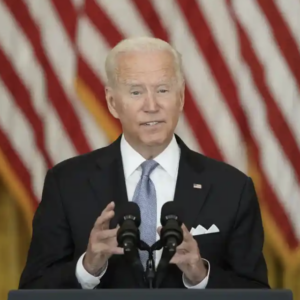The nation continues to track progress in finding out exactly how things went so badly in Afghanistan and what is still happening.
President Joe Biden’s discredited statement that the mission in Afghanistan was an “extraordinary success,” summed up what has taken shape as the administration’s final position.
He was speaking only of the evacuation, but his administration has seemingly taken that statement as guidance as to how to address the inconvenient Afghanistan issue in the future.
We have learned a few things of late. We heard the unequivocal answer to the central question surrounding the American withdrawal from Afghanistan.
Did the senior military leaders agree with the president on leaving no forces on the ground from a date certain?
We heard the answer repeatedly in Senate and House hearings that included Defense Secretary Lloyd Austin, Army Gen. Mark Milley, and Marine Gen. Kenneth McKenzie on September 28 and 29, respectively.
It’s clear Biden was not truthful on any level with respect to leaving Afghanistan during his interview with George Stephanopoulos on ABC August 18. All recommended leaving a residual force of about 2,500. The transcript reads as follows:
STEPHANOPOULOS: So no one told — your military advisors did not tell you, “No, we should just keep 2,500 troops. It’s been a stable situation for the last several years. We can do that. We can continue to do that”?
BIDEN: No. No one said that to me that I can recall.
His answer could have been that he heard the advice given yet decided to go another way. He chose instead to create a fiction that all involved senior military advisors were on board with his vision.
They were not. None of them were.
We also learned Biden’s claim that Al-Qaeda is no longer in Afghanistan is just not true.
According to CNN, which is clearly sympathetic to the administration, “Biden’s claim that al Qaeda is ‘gone’ from Afghanistan is false.”
Equally clear is that the president is ready to move on.
Administration officials seem actively dedicated to that cause and appear in resist mode against attempts by lawmakers of both political parties to get answers to basic questions.
CNN reported days just before the Austin, Milley, McKenzie hearings “(m)ultiple lawmakers angrily stormed out of a classified briefing with members of the Biden administration,” due to unacceptable answers to their questions.
The Afghanistan story is not all in the past for the U.S. or its allies.
At the Senate hearing both Austin and McKenzie were asked, curiously briefly, and without elaboration, about the plight of women and girls, something highlighted by the four administrations that oversaw the war. There were numerous occasions for extolling U.S./Allied forces helping women emerge from Taliban mistreatment and achieving strides in education during the 20-year conflict.
Their responses were Washington-speak non-answers. Both muttered nonsensical responses, saying only that we must now use “economic levers,” to help ensure gains made.
It is obvious that whatever advancements were made are lost.
Now protests to allow girls into school are being harshly put down in some places. We can expect that measures to squash future protests will be met with stronger and stronger responses.
Women are, for the moment, not allowed to attend Kabul University but may return when a “real Islamic environment” exists. Whatever that means. When (or if) they return only women can teach women (with possible exceptions that in some instances men will teach women) and hijabs are mandatory for all women attending university classes to include teachers and students.
Women have been “prohibited…from returning to work.”
It’s doubtful many take any comfort from the U.S. pledge that it “will continue to support Afghan women and girls.”
Turning to Afghan evacuees, they are spread throughout U.S. communities, U.S. military bases, and overseas U.S. bases.
As of September 30, “(m)ore than 2,600 Afghan evacuees have resettled in the United States while about 53,000 await processing at military bases in the United States…(and)(a)n additional 14,000 evacuees at overseas staging bases are still awaiting flights to the U.S…”
The most contentious issue remains how many U.S. citizens are still stranded in Afghanistan. The vague number of about 100 continues as evacuations continue. It is not obvious that U.S. officials really know.
The Afghanistan story is not over no matter how much Biden wants it to be.

